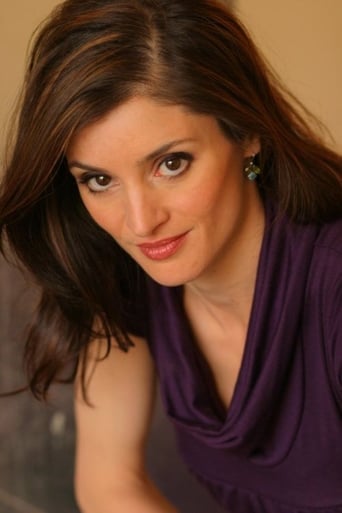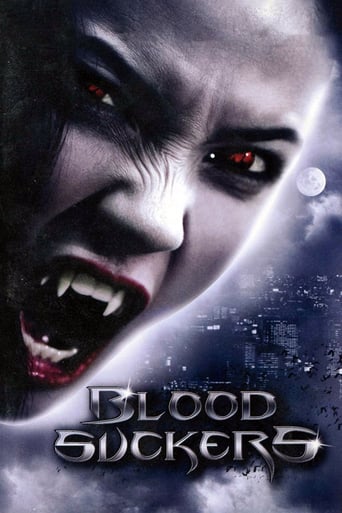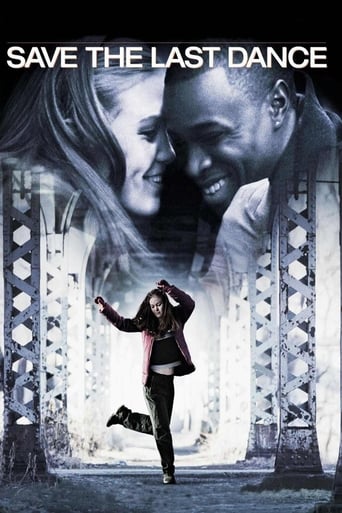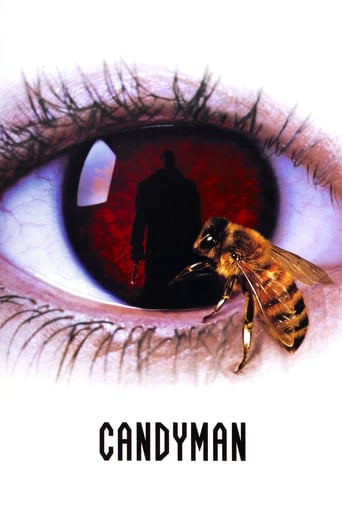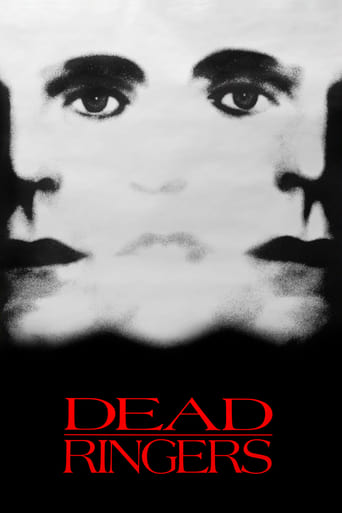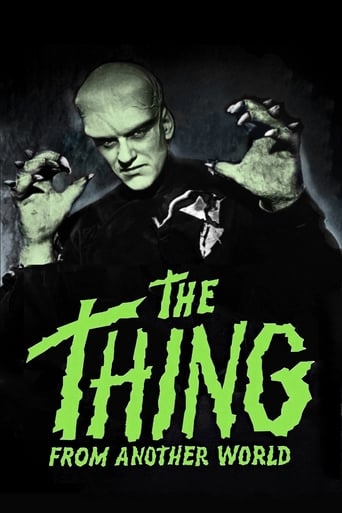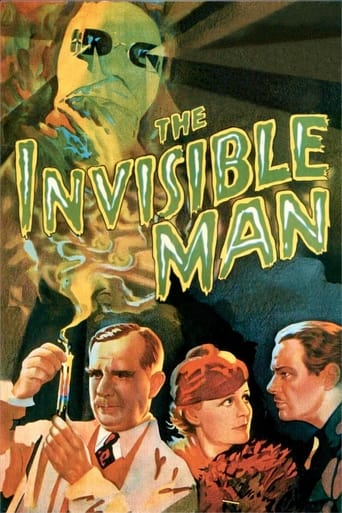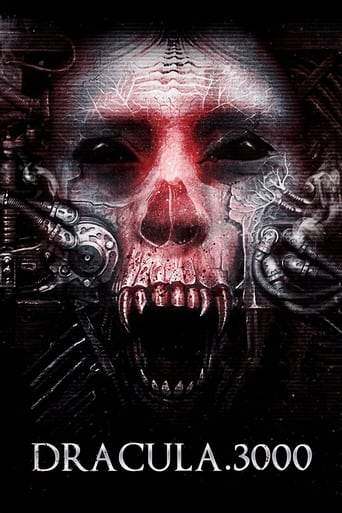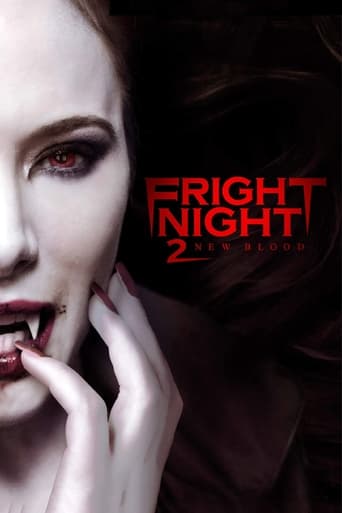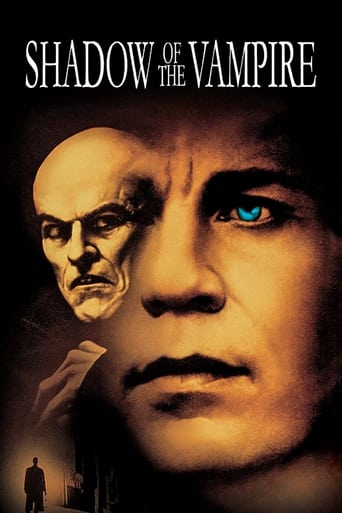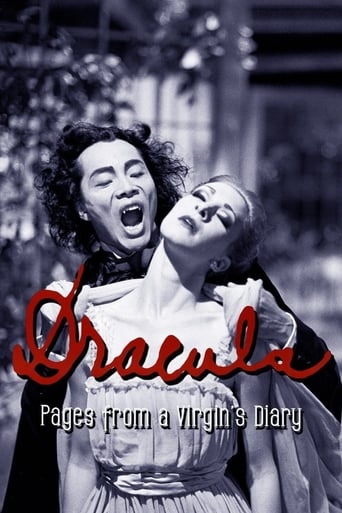
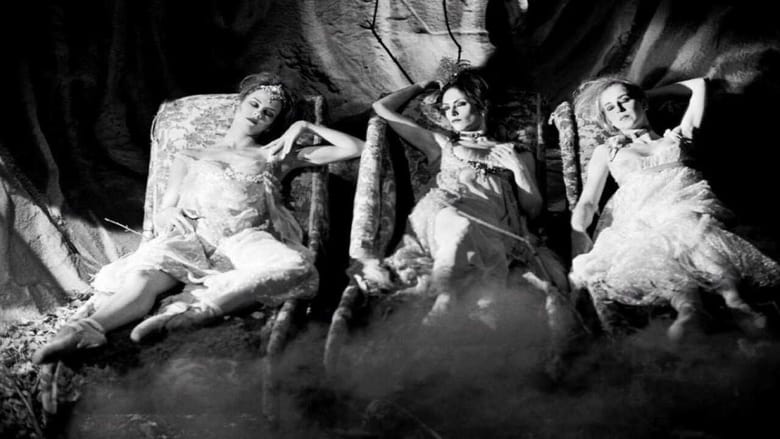
Dracula: Pages from a Virgin's Diary (2002)
A cinematic version of the Royal Winnipeg Ballet's adaptation of Bram Stoker's gothic novel Dracula. Filmed in a style reminiscent of silent Expressionist cinema of the early 20th century (complete with intertitles and monochrome photography), it uses dance to tell the story of a sinister but intriguing immigrant who preys upon young English women.
Watch Trailer
Cast


Similar titles
Reviews
After reading Bram Stoker's novel "Dracula," I've been seeking out a bunch of movie adaptations of it. I wouldn't have guessed that my favorite would turn out to be a ballet movie made in the style from the silent film era, but it has. "Dracula: Pages from a Virgin's Diary" does many things well. As an adaptation, it succeeds because it focuses on and accentuates a couple major themes from the novel and doesn't get bogged down in details of faithful rendering of the book or peripheral nonsense, such as the movies that turn the gothic horror story into a romance, or about the historical Vlad the Impaler, or both. As a silent-film ballet, it succeeds by the marriage of two mute art forms and by integrating the editing with the music and the camera within the dance rather than outside it as a spectator.Stoker's novel is about many things--it's a relatively long, even too long, book, after all. No movie has, should or could encompass it all. The ones that some people claim have come closest (Franco's 1970, the 1974 and 1977 TV-movie, or Coppola's 1992 versions) tend not to be very good adaptations or even very good movies. The better ones, including the 1931 films and the 1922 "Nosferatu," or even some of the Hammer splatters, and this one, stray considerably from the word of Stoker, but they all do a few things well. This one concentrates on the sex and xenophobia inherit from the novel. We get the xenophobia part from the start, as words blazed across the screen shout about the threat of a foreigner from the East landing on the shores of England. Casting an Asian performer in the role of Dracula was a stroke of genius, as it has considerably more resonance in today's West than would yet another incarnation of Bela Lugosi's suave, Latin-lover type. Later, the xenophobia is tied in with money--literally, a casket full of cash that Dracula sneaks back to his home country--which also has more resonance today, where racism is frequently rationalized as economic. The fear of miscegenation that Dracula's bloodsucking on Englishwomen presents is, perhaps, less of a panic nowadays, but it ties these two major themes together.And, boy, does this movie bring out the sexual subtext of Stoker's tale. The blood transfusions of Lucy play out like a gangrape. Others had made this connection before in readings of "Dracula," of blood as a stand-in for semen--that of the Englishmen being used to combat the exchange of fluids from the foreign Dracula. But, it's one thing to read and think about the subtext; it's another to see it so visually and vigorously implied. In the first act, Van Helsing's examination of Lucy also includes a rough gynecological look. From here, the sexual references continue to pour. Lucy, as a vampire, is attacked by the men again--this time all bearing especially phallic stakes, or spears or pikes, to poke her with. Later, the men turn their weapons upon the sisters/wives of Dracula with gusto equal to their blood donations, and despite the homoeroticism of it, upon Dracula, who they leave impaled upon the phallic object.Not content with merely male sexual aggression, however, there's also a brief glimpse of Harker's stay at Castle Dracula, which is consumed by imagery of the lustful female vampires. To combat this foreign threat to her betrothed, Mina even attempts to perform fellatio on Harker in a scene akin to that of the blood transfusions on Lucy. This episode is brought on by Mina reading Harker's account of the fem vamps in his diary (hence the movie's title), which along with an earlier scene of Van Helsing stealing Lucy's journal, alludes to the epistolary structure of Stoker's novel, which was largely composed of diary entries. The sets for these later acts involving Mina also contain pathways suggestive of vaginas--contrasting with the phallic pikes otherwise employed throughout. You don't have to appreciate Freudian film theory to understand this stuff; it's blatant. One title card even reads, "cuckold's counterblow," as the Western heroes attack the vampire's lair.This is a gorgeous and rhythmic picture. As many of my IMDb reviews will attest, I've long been a convert to appreciating the silent film era. Oddly, although I've long known about Guy Maddin's postmodern tendency to adopt this era's style, this is the first movie of his that I've seen. It's clear that he knows how to compose an image and how the silent art form enhances this. The use of framing, such as irises, and filters, petroleum jelly on the lens for soft focus edges, slow motion and other image distortions, sound effects, dissolves and tinting/toning are exceptional. The sparing use of color, including for red blood, and the lighthouse strobe light in the first act are especially nice touches. And I've never seen two silent art forms--the silent film and ballet--integrated like this before.Although I'm a fan of silent films, until now, I've never much appreciated ballet. At university, I had a class where we were tortured with a statically-filmed, live-ballet performance. There's not much worse in filmdom than a camera that forces one into the position of a second-generation theatrical spectator--removing any benefits of the live performance and leaving only static dullness. Here, however, the camera is part of the performance; like the human performers, it dances. Additionally, the quick editing style is in rhythm with the music. The effect is immersive and visceral. As with the actors of the silent film era, who used a system of gestures adapted from theatre to express their characters, ballet has its own expressive codes. Thus, not only are the performers' expressions enhanced by cinematic elements such as the close-up, but, here, also by transmuting it through another art form that relies upon coded gestures. The themes from Stoker's novel are likewise enhanced by the transmutation.(Mirror Note: Dracula's lack of a reflection isn't addressed, but there is a beautifully-done scene of Lucy looking in the mirror.)
Awful. I actually got sick to my stomach trying to watch this film. I've been registered for a long time on IMDb.com and I've watched a lot of movies in that time, this is the first time that I've felt compelled to leave a review. This is more of a warning than a review. Run! Run away from the nasty piece of trash that can only mockingly be called art. Run! I found this film searching via Google because I'm a fan of classic silent horror films such as "Nosferatu" (http://www.imdb.com/title/tt0013442/), "The Phantom of the Opera" (http://www.imdb.com/title/tt0016220/), and the "The Cabinet of Dr. Caligari" (http://www.imdb.com/title/tt0010323/). If you are a fan of horror films or if you are a fan of silent films, do not believe any good reviews of this film you may have seen. This is NOT a good film. RUN! Beware!
Maddin's first feature-length commissioned work that he didn't originate, and in this case didn't write either. Very different stylistically from the following film ("Cowards Bend the Knee"), this is the film of a ballet by Mark Godden for the Royal Winnipeg Ballet, based on Bram Stoker's novel, with music taken from Gustav Mahler's first and second symphonies. Not typical Maddin material at first glance perhaps but the psychosexual nature of the Dracula story melds surprisingly well with Maddin's aesthetic, offering a more dreamlike and romantic vampire tale than usual, but also one in which the violence and hatred in the bigoted Victorian English men who confront the vampire is made almost as explicit as Dracula's own hunger.I'm not going to go into any great detail about the story, as it follows the fairly typical Dracula pattern; suffice it to say that young Lucy Westernra (Tara Birtwhistle) is seduced by Dracula, turns vampire and is ultimately killed; her husband-to-be has enlisted the aid of Van Helsing (David Moroni) who tracks Dracula to his lair by means of a new potential victim, Mina (CindyMarie Small) being used as bait. Finally, a confrontation between the lord of the night (Wei-Qiang Zhang) and Van Helsing's group ensues in the vampire's underground abode.This is very different-looking from the succeeding film, indeed rather different from any of the director's other films. Much of the film is shot in sharp and crisp 35MM as opposed to his more usual super-8 and 16mm (though I believe he uses some of those as well), many of the shots are longer and more fluid, and there is a dramatic use of color, digitally painted on in just a few bold strokes - red blood on the neck, Dracula's bold and frighteningly large red cloak, green money, yellow digital titles. The longer, more "balletic" and graceful shots contrast strongly with the rapid cutting in the action scenes and really help to highlight the sense of fear and unearthliness, and the casting of a Chinese-Canadian as the dreaded count emphasizes the xenophobia inherent in the novel and in the Victorian mindset generally.Gustav Mahler was a rough contemporary of Stoker's, and his first two symphonies premiered in the early 1890s roughly when Stoker was writing Dracula. I've been a huge fan of Mahler for years and at first I wondered how appropriate these works would be, but they fit this work almost like a glove - the glory of nature expressed in the first movement of the first symphony perfectly expresses the freedom that this bold, sexual and luminous being Dracula brings to the young repressed maidens of stuffy English society, and the "Resurrection" symphony (the second) is perfectly appropriate to many of the themes inherent in the vampire story. Also, their placement as late romantic works on the cusp of modernity seems to jibe well with Maddin and Godden's vision of Dracula as a 20th century, threatening, alien creature who may offer promise and a bold and liberated way in the world, but who the world is just not ready for.Beautifully and expressively dance, wonderfully shot and edited, if there's a problem here it's that Maddin's trademark strange humor seems to me at times a little out of place -- many of the titles are deliberately exaggerated, particularly at the beginning of the film. But this is a small qualm, and the beauties and emotional power of the story soon leave the few goofy elements behind. Gorgeous and visionary and proof that Maddin can do quite well with someone else's ideas to work from.
What does it mean exactly to say that Guy Maddin's Dracula: Pages from a Virgin's Diary is stylish? Movies that, conversely, have a seeming "lack" of style like a minimalist movie ala Jarmusch em to get the short end of the discussion, while Maddin tries his hardest to make his images and movements of cinematic dexterity *pop* like cracking of knuckles on a movieola. It is a crazily inspired vision, stylized with urgency and a force to be reckoned with as far as taking silent film and pushing it into a new kind of expression: the ballet. Whether or not this will please people looking for a solid Dracula movie is another matter, since it isn't much, at all, a coherent telling of the Stoker story.And maybe rightfully so; people need to know right up front that Pages from a Virgin's Diary is one of the most unconventional vampire movies ever, and not because it changes around anything with the myth or even with many of Stoker's characters (although there is a Cowboy or other in the film that I don't remember in Stoker's story or Coppola's film). It's the expression of the story, told through the characters dancing and going through pantomime and detailed choreography that is both dazzling and frustrating. Unless you're really heavy into ballet and dance, after about half an hour some of this becomes just too much, and too much in the repetitive sense. Characters also keep popping up with title cards extended for them, but with the exception of Renfield (who's given a face by the actor that is remarkable), I couldn't entirely follow who was who, except that a Chinese guy drifted in and out and turned to be a vampire, yada-yada, etc.I shouldn't be this dismissive of the story, or the manner in which it was told. And, besides, I didn't go into the film thinking I would get an instant classic of the most noted (maybe too noted) source of vampire lore in history. What I did get was a fever dream, nd kaleidoscope, and experiment tossed into a blender of 1920s expressionism given more freedom than ever with 21st century technology, and hints of what was to come a few years later with Sin City's attempts at giving black and white film-making some "color" from time to time. The symbols come flying out almost as much as the dizzying camera-work, sometimes going as fast as the dancers, and for someone looking for just inspired direction on a familiar theme this is definitely where to look; in fact as far as the kind of Nosferatu story goes, this is as daring as Herzog's film.It just isn't entirely involving on an emotional level, and Maddin sets it all up and knocks it down like a very small-range technical exercise. Few exercises are this exhilarating or with such inventiveness with the process and history of film-making, but it's an exercise nonetheless. B+


